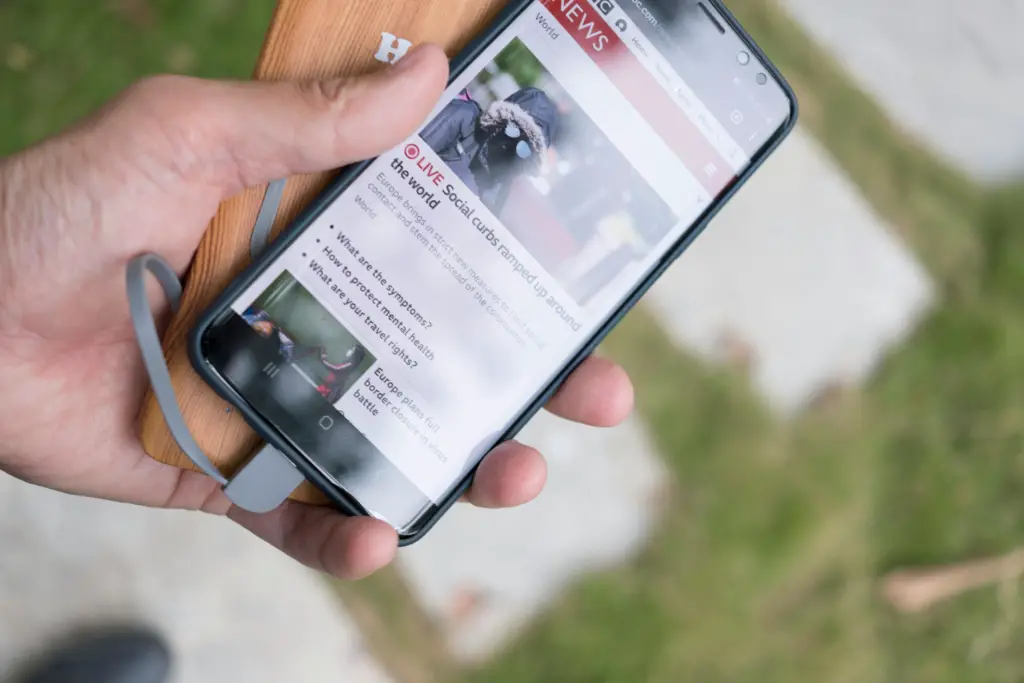
Introduction
Using your phone while charging may seem normal, but there are risks that can threaten your safety and the longevity of the device. Let’s take a closer look at why you should rethink multitasking with your phone and charger.
Highlights:
- Using your phone while charging poses safety risks such as electric shock, overheating, and rare explosions due to battery problems.
- It affects charging speed and battery life by slowing the charging process, reducing battery efficiency, and shortening battery life over time
- Best practices for safe battery use include using a high-quality charger, avoiding extreme temperatures, operating with normal charging habits, updating software, and checking battery health so always
- Fees are avoided in high-risk activities to avoid unnecessary risk and reliable funds are used to reduce the risk of risk or security threats
Effects of Using Your Phone While Charging:
- Decreased Charging Speed:
Using your phone while charging can greatly affect its charging speed. When you plug your phone into the charger, the power management system directs electricity to charge the battery and power the device’s functions.
However, if you’re using your phone actively while plugged in, the system has to allocate some incoming power to support your usage, keeping the battery at a point where it will charge at full capacity and consequently that charging slows down and your phone takes longer to reach full charge.
This phenomenon is especially noticeable when tasks are highly demanding, such as streaming video, playing games, running resource-intensive applications or in these cases, the phone’s processor and display consumes excess energy, greatly reducing the available energy for charging. As a result, even if you leave your phone plugged in, you’ll see the battery percentage gradually increase, prolonging the charging time.
- Heat Generation:
One of the most concerning consequences of using your phone while charging is heat buildup. Like any electronic device, a smartphone generates heat during operation, but this heat increases dramatically when the device is charging and in use at the same time.
As the phone draws power from the charger to carry on your activity, the internal components, especially the battery and processor, work harder, increasing the heat output plus the charger itself generates heat when lightning energy passes through the charging circuitry and into the battery no. Combined with the heat generated by using the phone, this can result in high temperatures that can exceed optimal device performance.
Heat buildup can pose a number of hazards to your phone. First, it can cause heat to the battery, causing it to wear out faster and shorten its life. Repeated exposure to high temperatures over a long period of time can reduce battery capacity, resulting in shorter battery life and more frequent discharges Additionally, overheating can also affect other components , such as processors, displays and circuitry, and can compromise their performance and resulting longevity.
- Damage to Hardware:
Using your phone while charging can cause severe hardware damage due to the combination of heat and electrical stress. As mentioned earlier, the high temperatures associated with simultaneous charging and handling can put stress on various components in the device.
Batteries, for example, are particularly susceptible to heat damage. Prolonged exposure to high temperatures can cause battery electrolysis, causing chemical reactions and increasing internal pressure This high pressure can cause the battery to overheat or cracks have even occurred, creating the risk of collapse, fire and explosion. Also, excessive heat can affect the integrity of solder joints, connectors, and other critical components, resulting in equipment malfunctions or damage.
Additionally, the increased electrical voltage on the phone’s circuitry when using resource-consuming features during charging can put a lot of stress on the internal components, leading to possible electrical faults or short circuits. In extreme cases this can cause permanent damage to the device, rendering it inoperable , requiring expensive repair or replacement.
- Battery Degradation:
One of the most significant long-term consequences of using your phone while it’s charging is the degradation of the battery. Lithium-ion batteries, which are commonly used in smartphones, are sensitive to heat and stress, and prolonged exposure to these conditions can accelerate their deterioration.
When you use your phone while it’s charging, the battery is subjected to increased thermal stress, as well as additional charge and discharge cycles. This combination of factors can lead to accelerated degradation of the battery’s capacity and performance over time. As the battery undergoes repeated charging and discharging cycles, its ability to hold a charge diminishes, resulting in shorter battery life and reduced overall runtime.
Furthermore, the elevated temperatures generated during simultaneous charging and usage can exacerbate the degradation process, causing chemical changes within the battery that further compromise its stability and longevity. Over time, this can manifest as decreased battery capacity, increased internal resistance, and a higher likelihood of sudden shutdowns or battery-related issues.

5. Electrical Hazards:
Using your phone while charging also increases the risk of electric shock, including electrocution or injury. When a phone is plugged into a charger it generates a direct current to the power source, and any contact with exposed metal parts or conductive materials can cause an electric shock.
In addition, the combination of thermal and electrical stresses during charging can increase the chances of component failure or malfunction, creating potential safety hazards for a faulty Charger , damaged wiring, or faulty internal circuitry can pose a risk of power failure or short circuit, especially if plugged in. -in telephone you use is fine.
Also, using your phone with wet hands or while charging in a humid environment can increase the risk of electrocution, as water can conduct electricity of the phone to facilitate electric shock Handle your phone and charger properly to minimize these risks, of the phone in wet and damp conditions To avoid use is required to ensure that all electrical connections are secure and undamaged.
Tips for Safe Charging Practices:
Avoid Extreme Temperatures: Charging your phone in extreme heat affects the battery performance. High temperature accelerates degradation, while cold reduces effective charging. Charge at the right temperature to maximize battery life.
Practice Moderation: Overcharging causes battery drain. Aim for between 20% and 80% for optimal performance. Avoid compromising completely or at full cost.
Use battery management features: Smartphones offer features like customization modes and health monitoring. Use these to extend battery life.
Keep Software Updated: Regular updates improve battery management and playability. Install the latest software provided by your device manufacturer.
Avoid Untrusted Charging Sources: Unfamiliar public stops and USB ports pose security risks such as malware or data theft. Use trusted resources like your charger or reputable stations.
Unplug Unused Chargers: To prevent electrical interruption and electrical hazards, disconnect the charger from the outlet when not in use. Conserve energy and reduce accidents.
Avoid Charging During High-Risk Activities: Charging during activities such as cooking or driving increases the risk of an accident or electrocution. Charge in a safe place.
Monitor Battery Health: Use built-in battery health tools to monitor battery capacity, charging, and overall health. Check for regular problems and address them immediately.
Conclusion:
Using your phone while charging poses a serious risk to your safety and longevity. You can protect yourself and your phone from harm by understanding the potential consequences and adopting safe charging methods. Remember that prioritizing security while charging ensures a smooth and reliable smartphone experience in the long run.










